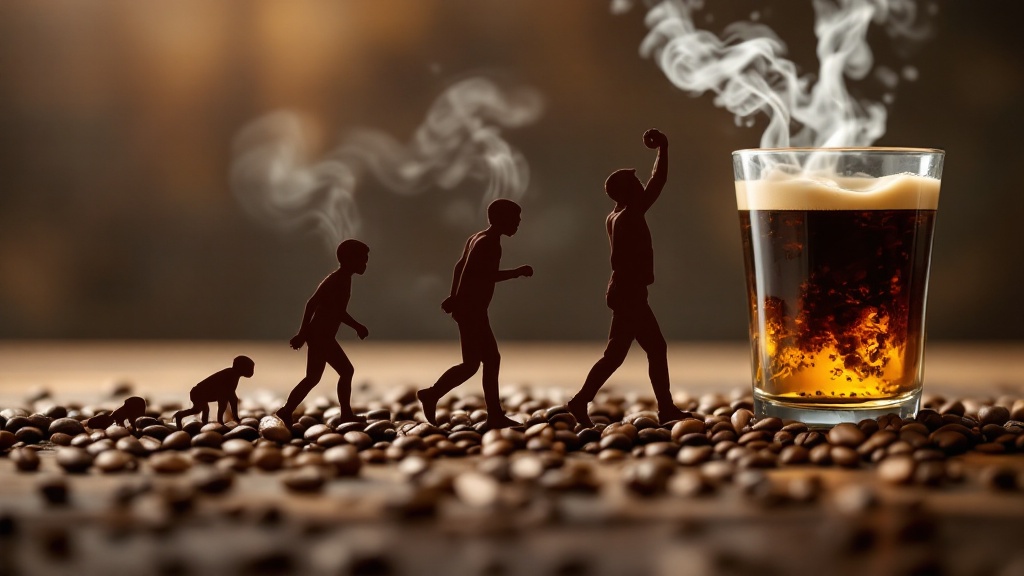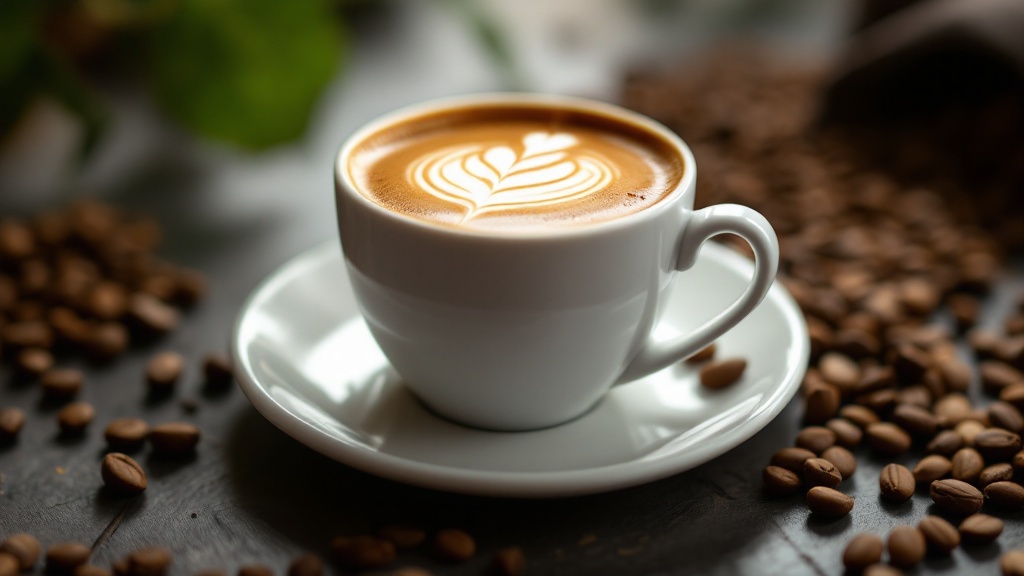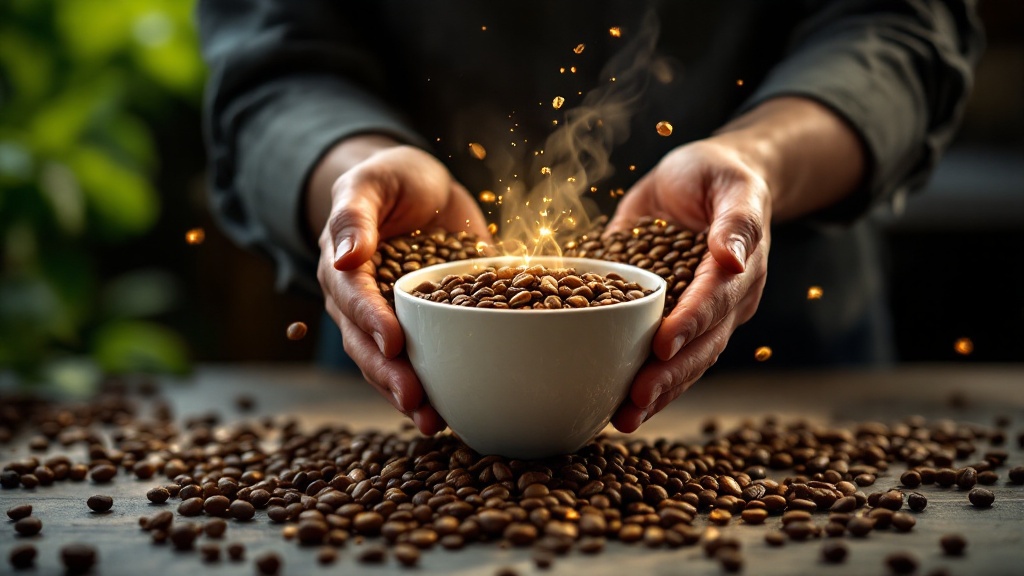Beyond the classic cup of joe, lies a world of exciting coffee creations waiting to be explored. From whipped delights to icy concoctions, fun coffee recipes offer a delightful way to personalize your caffeine experience. Whether you’re a seasoned barista or a curious coffee enthusiast, this guide is your passport to a world of flavor and innovation. Get ready to transform your daily brew into a delightful adventure!
- The Evolution of Coffee: From Bean to Buzzworthy Beverage
- Mastering the Art of the Brew: Essential Techniques for Fun Coffee Creations
- Unleash Your Inner Barista: Delicious Coffee Recipes to Try at Home
- Beyond the Basics: Exploring the Latest Coffee Trends
- The Future of Coffee: A Blend of Tradition and Innovation
The Evolution of Coffee: From Bean to Buzzworthy Beverage

Coffee’s journey, spanning centuries, is a testament to its enduring appeal. From its humble beginnings in Ethiopia, where it was consumed as a boiled beverage, coffee has evolved into a global phenomenon. The rise of specialty coffee in the 1970s marked a shift towards quality and craftsmanship, paving the way for innovative brewing methods and the exploration of diverse flavor profiles. The “third wave” of coffee, emerging in the early 2000s, further emphasized the importance of high-quality beans, precise brewing techniques, and the artistry of latte art. This movement catapulted fun coffee recipes into the mainstream, with creations like nitro cold brew and flavored lattes becoming staples in coffee shops worldwide.
Today, social media platforms like Instagram and TikTok are driving the latest coffee trends, with visually stunning and unique recipes capturing the attention of coffee lovers everywhere. This online community fosters creativity and experimentation, leading to the viral spread of recipes like Dalgona coffee and cloud coffee. As coffee culture continues to evolve, one thing remains constant: our collective fascination with this versatile beverage.
Coffee Extraction Methods
The extraction of soluble compounds from coffee grounds significantly impacts the final beverage’s flavor profile and body. Different brewing methods achieve varying degrees of extraction, influenced by factors like water temperature, contact time, and grind size. For instance, the pour-over method, utilizing devices such as Hario V60 or Chemex, relies on precise water pouring techniques to control extraction. A finer grind size increases surface area, leading to faster extraction and a more intense, potentially over-extracted cup if water temperature and contact time are not precisely managed. Conversely, a coarser grind size results in slower extraction, potentially producing a weaker, under-extracted brew. Optimal extraction targets a balance, typically achieving between 18-22% total dissolved solids (TDS), as measured by a refractometer. Deviation from this range results in either sour, under-extracted coffee or bitter, over-extracted coffee. The water itself plays a crucial role; mineral content can significantly impact the taste, and ideal water temperature for optimal extraction usually falls within the range of 195-205°F (90-96°C).
- Immersion methods, like French press, fully submerge grounds, resulting in higher extraction and often fuller-bodied coffee.
- Espresso uses high pressure to rapidly extract concentrated coffee, achieving a high TDS in a short time.
- Grind size directly correlates to surface area; finer grinds extract faster, coarser grinds slower, influencing taste.
- Water quality, including hardness and mineral content, significantly affects the final taste of the coffee.
- Bloom (pre-infusion) is a crucial step in many methods, degassing grounds and promoting even extraction.
- Over-extraction leads to bitterness and astringency, while under-extraction results in sourness and lack of body.
| Extraction Method | Grind Size | Water Temp | TDS Range |
|---|---|---|---|
| Pour-Over | Finer grind | 195-205°F | 18-22% |
| French Press | Coarser grind | 195-205°F | 18-22% |
| Espresso | Very fine grind | 195-205°F | High TDS |
Mastering the Art of the Brew: Essential Techniques for Fun Coffee Creations

Creating exciting coffee recipes often starts with mastering the fundamentals of brewing. Different methods yield distinct flavor profiles and textures, providing a foundation for your culinary coffee adventures. Espresso, extracted using 9 bars of pressure for 25-30 seconds, forms the base for many specialty drinks. Cold brew, made by steeping coarsely ground beans in cold water for 12-24 hours, offers a smooth, low-acid alternative. The AeroPress, with its quick brew time and versatility, is another popular choice for creating unique coffee concoctions.
Understanding coffee-to-water ratios is crucial for achieving optimal flavor. A general guideline for cold brew is a 1:8 coffee-to-water ratio, while espresso requires a more precise balance. The Specialty Coffee Association (SCA) recommends an extraction yield of 18-22% for optimal flavor. Experimenting with grind size, water temperature, and brew time allows you to fine-tune your brewing process and unlock the full potential of your beans. Tools like milk frothers, espresso machines, and pour-over kits can elevate your coffee game, allowing you to create professional-quality drinks at home.
Espresso Extraction Yield
Achieving optimal espresso extraction requires precise control over several variables, most critically the extraction yield. The Specialty Coffee Association (SCA) recommends a target range of 18-22% for ideal flavor balance. This percentage represents the ratio of extracted solids to the total dry mass of the coffee grounds. An extraction yield below 18% indicates under-extraction, resulting in a sour, underdeveloped flavor profile with a lack of body. Conversely, an over-extracted shot (above 22%) will taste bitter and astringent, often exhibiting a burnt or harsh taste. Monitoring extraction yield requires precise measurement of both the input (ground coffee mass) and output (espresso yield). A calibrated scale is crucial for accurate measurement of both.
- Extraction yield is calculated by dividing the weight of the extracted espresso by the weight of the dry coffee grounds, then multiplying by 100%.
- Factors influencing extraction yield include grind size, dose, tamp pressure, water temperature, and brew time.
- A refractometer provides a more precise measurement of extraction yield by measuring the dissolved solids in the espresso.
- Beyond the 18-22% range, even small deviations can significantly impact the final cup’s flavor characteristics. For example, 17% might taste sour, while 23% could be intensely bitter.
- Tracking extraction yield over time helps dianostics and improve shot consistency.
Unleash Your Inner Barista: Delicious Coffee Recipes to Try at Home

Ready to embark on a coffee adventure? Here are a few fun and easy recipes to inspire your creativity:
Optimal Coffee Extraction Ratios
Achieving optimal coffee extraction requires a precise ratio of coffee grounds to water. This ratio directly impacts the final beverage’s flavor profile, body, and overall quality. A ratio that’s too low (under-extracted) results in a sour, weak cup with underdeveloped flavors. Conversely, a ratio that’s too high (over-extracted) produces a bitter, astringent brew with burnt notes. The ideal extraction range generally sits between 18% and 22%, although personal preference can influence this slightly. This percentage represents the amount of soluble coffee solids extracted from the grounds into the brewed coffee.
- Dalgona Coffee:This viral sensation involves whipping equal parts instant coffee, sugar, and hot water into a fluffy cloud-like consistency. Gently spoon this delightful mixture over cold milk and enjoy a sweet, creamy treat.
- Nitro Cold Brew:Infuse your cold brew with nitrogen gas to create a velvety smooth texture and a cascading visual effect. If you don’t have a nitro tap, you can achieve a similar effect by using a whipped cream dispenser.
- Affogato:Indulge in this classic Italian dessert by pouring a shot of hot espresso over a scoop of vanilla ice cream. The contrasting temperatures and flavors create a truly decadent experience.
- Pumpkin Spice Latte (PSL):Capture the essence of autumn with this beloved seasonal favorite. Combine espresso, steamed milk, pumpkin spice syrup, and a dollop of whipped cream for a comforting and flavorful beverage.
- The ideal coffee-to-water ratio is often expressed as a coffee ratio (e.g., 1:15, meaning 1 gram of coffee to 15 grams of water).
- Grind size significantly impacts extraction; finer grinds extract faster, potentially leading to over-extraction if the ratio isn’t adjusted.
- Water temperature plays a crucial role; generally, water between 195-205°F (90-96°C) is recommended for optimal extraction.
- Brew time is another factor; longer brew times can lead to over-extraction, even with a good ratio.
- Using a scale for precise measurements is essential for consistent results and achieving the desired extraction percentage.
- Experimentation is key to finding your personal sweet spot within the 18-22% extraction range.
Beyond the Basics: Exploring the Latest Coffee Trends

The world of coffee is constantly evolving, with exciting new trends emerging all the time. Health-conscious consumers are embracing plant-based milks like oat and almond milk, as well as natural sweeteners like honey and maple syrup. Seasonal variations, such as peppermint mochas in the winter and iced lavender lattes in the summer, offer a delightful way to celebrate the changing seasons.
Looking ahead, innovations like molecular coffee, a lab-grown alternative, and CBD-infused coffee are poised to reshape the coffee landscape. Sustainability is also taking center stage, with a growing emphasis on upcycled coffee grounds and eco-friendly packaging. As these trends gain momentum, they promise to further diversify the world of fun coffee recipes and cater to an ever-evolving range of tastes and preferences.
Molecular Coffee Extraction
Molecular coffee, also known as lab-grown coffee, represents a significant advancement in coffee production, leveraging techniques from molecular gastronomy and cellular agriculture. This approach bypasses traditional coffee plant cultivation, instead focusing on growing coffee cells in a controlled environment, typically using bioreactors. These bioreactors provide the optimal conditions for cell growth, including precise temperature control (typically between 25-30°C), pH regulation (around 5.5-6.5), and nutrient delivery via specialized media containing sugars, nitrogen sources (e.g., ammonium salts), and growth factors. The process involves meticulous monitoring and adjustment of these parameters to maximize the production of desirable coffee compounds such as caffeine, chlorogenic acids, and aromatic oils.
- The process yields a coffee product without the need for land, pesticides, or water-intensive farming.
- Coffee cells are harvested and processed to extract coffee compounds, potentially resulting in a more consistent product.
- Scale-up challenges exist in moving from lab-scale bioreactors to industrial-sized production.
- The resulting coffee’s flavor profile is still under development and may differ from traditionally grown coffee.
- This method has the potential to significantly reduce the environmental impact of coffee production.
- Research is ongoing to optimize cell growth and maximize the yield of desirable flavor compounds.
The Future of Coffee: A Blend of Tradition and Innovation

The world of coffee continues to evolve, driven by a passion for quality, innovation, and the desire to create new and exciting experiences. From the ancient rituals of coffee preparation to the cutting-edge techniques of molecular gastronomy, the journey of coffee is a testament to its enduring appeal. Fun coffee recipes embody this spirit of exploration, offering a canvas for creativity and personalization.
As we embrace the future of coffee, we can expect to see even more exciting developments, from sustainable practices to innovative flavor combinations. Whether you prefer a classic cappuccino or a daring new concoction, there’s a perfect coffee recipe waiting to be discovered. So, grab your favorite beans, experiment with new flavors, and elevate your coffee routine to a whole new level of enjoyment. Cheers to the endless possibilities of coffee!
Precision Coffee Extraction
Achieving optimal coffee extraction requires a precise understanding of several key parameters. The primary variables influencing extraction yield and quality include water temperature, brew ratio (coffee-to-water ratio), grind size, and brew time. Water temperature, ideally between 90-96°C (194-205°F), impacts the solubility of various coffee compounds. Temperatures below this range result in under-extraction, yielding a sour and weak cup, while temperatures above this range lead to over-extraction, producing a bitter and astringent brew. The brew ratio, often expressed as grams of coffee per liter of water, directly influences the strength and concentration of the final beverage. A higher ratio results in a stronger brew, while a lower ratio yields a weaker one. Grind size, measured typically on a scale from coarse to fine, significantly affects the surface area exposed to the water during extraction. A coarser grind results in less surface area and slower extraction, while a finer grind exposes more surface area and accelerates extraction.
- Water chemistry (hardness, mineral content) also impacts extraction, affecting taste and mouthfeel.
- Bloom pre-infusion (brief saturation of grounds) helps degas coffee and ensures even extraction.
- Agitation techniques (stirring, swirling) during brewing can improve uniformity and yield.
- Grind size consistency is crucial; uneven grinds lead to uneven extraction and a flawed cup.
- Consider using a refractometer to measure Total Dissolved Solids (TDS) for precise extraction assessment.
- Different brewing methods (e.g., pour over, French press) require adjustments to these parameters for optimal results.
| Key Aspect | Water Temp | Brew Ratio | Grind Size |
|---|---|---|---|
| Optimal Extraction | 90-96°C (194-205°F) | Grams of coffee per liter of water | Coarse to fine scale |

